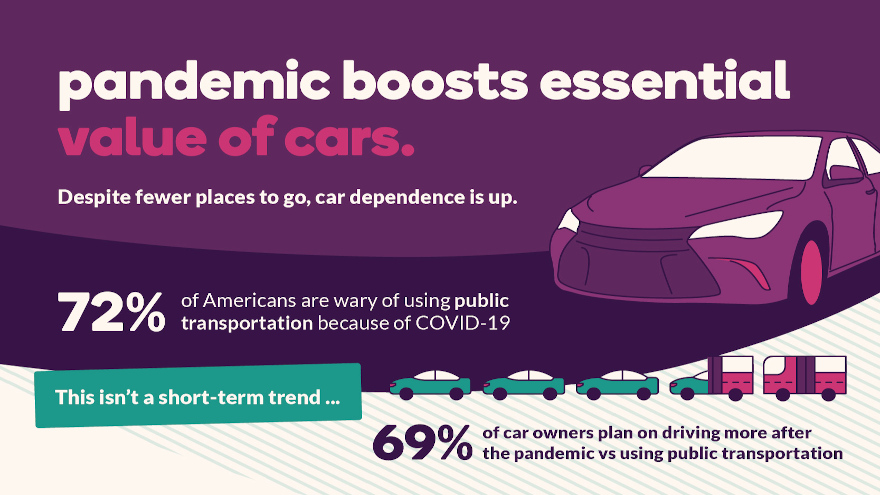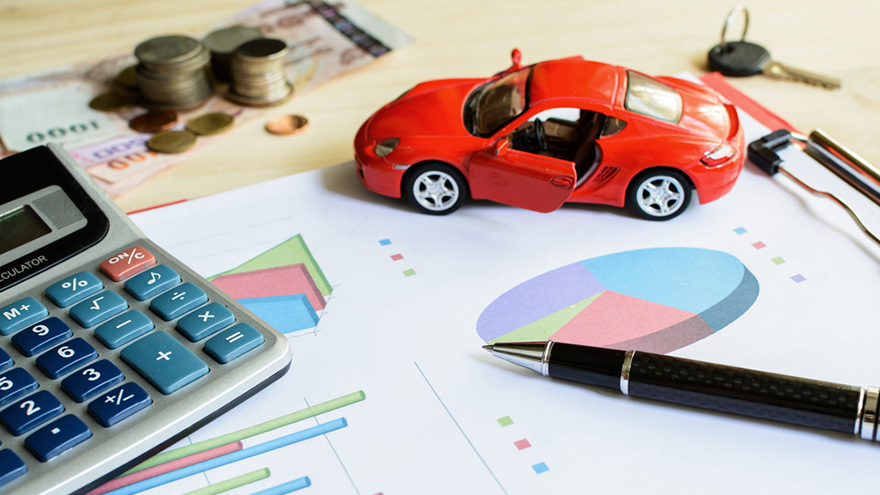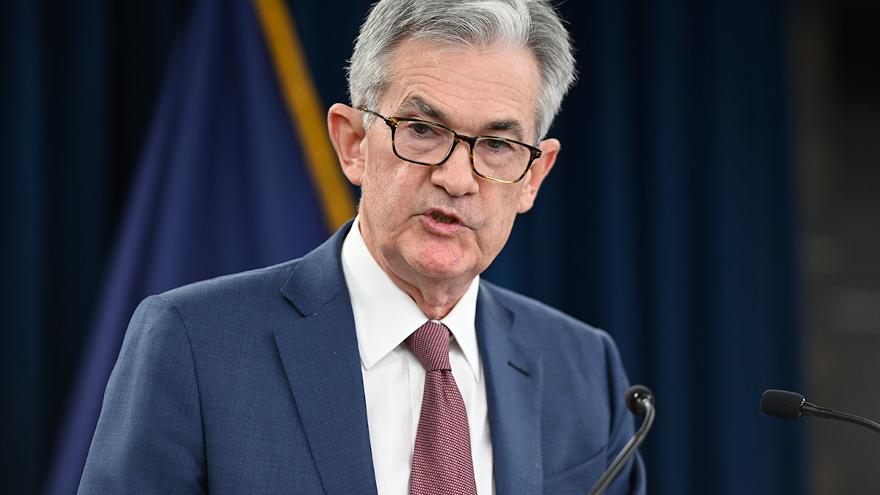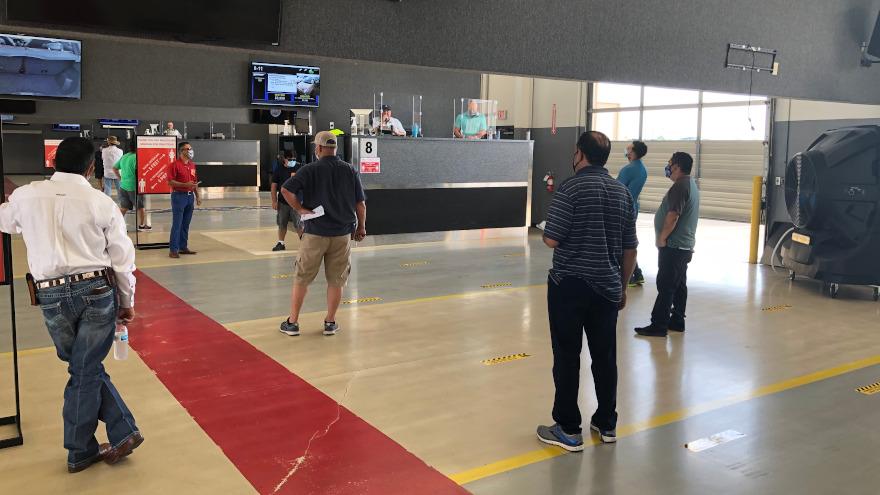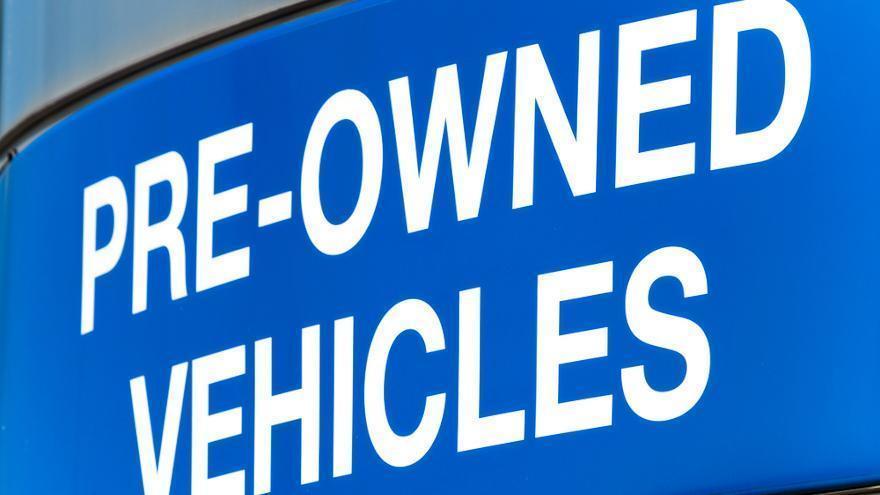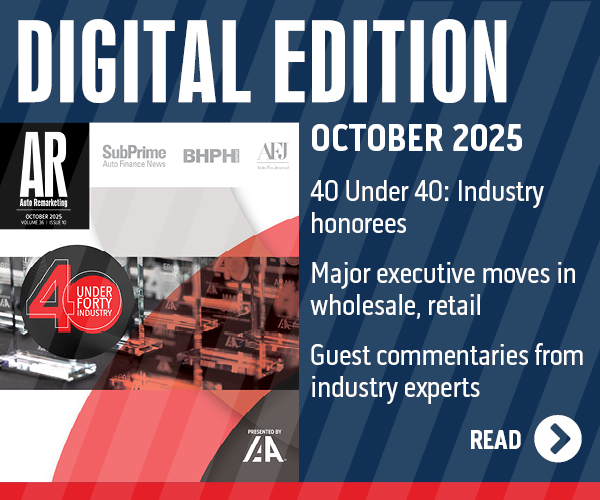AAA projected a decline of at least 10% in travel for Thanksgiving — the largest one-year decrease since the Great Recession in 2008.
For individuals who did go somewhere to see family and friends for the holiday, AAA Travel senior vice president Paula Twidale said the majority went by car, “which provides the flexibility to modify holiday travel plans up until the day of departure.”
Thanksgiving reinforced findings from a new survey from Ally Financial about how cars and personal transportation are more essential to people’s lives than prior to the COVID-19 pandemic.
According to a survey of 2,000 American adults conducted by OnePoll on behalf of Ally Financial, 72% of vehicle owners say that going for a drive alone allows them to clear to their head.
The survey also indicated nearly three-quarters of men (73%) and more than half of women (53%) consider their vehicle to be their personal “fortress of solitude.”
In addition, the pandemic has caused Americans to rethink their desired mode of transportation.
The Ally survey showed nearly three out of four Americans — 72% to be exact — are wary of using public transportation because of COVID-19. The finance company pointed out this finding isn’t just a short-term trend, since 69% of car owners say they plan on driving more after the pandemic ends rather than use public transportation.
“The pandemic has forced Americans to rethink how we use cars, and why,” Ally Insurance president Mark Manzo said in a news release. “Even though many of us are using our vehicles differently, cars are more vital than ever, serving as a source of solitude and providing a safe means of travel for us and our families.”
When it comes to work-related driving, the Ally survey revealed 45% are spending less time driving — or not driving at all — to and from work. Meanwhile, the survey also showed 26% of gig-job drivers, such as DoorDash or Instacart, have increased their time behind the wheel.
While driving plays an important role helping Americans ease their minds, Ally’s survey noted that many vehicle owners are dealing with stress concerning expenses.
More than half of drivers (57%) are worried about unexpected repair costs, and 58% may hold on to their current vehicle longer than originally planned.
The survey results also highlighted the tough choices many vehicle owners have made due to the pandemic: More than one in three (36%) have had to choose between an installment payment or repair.
“Too many Americans are struggling with financial uncertainty,” Manzo said. “To help ease the anxiety of an unexpected and expensive car repair bill, drivers should consider vehicle service contracts. These types of protection plans provide peace of mind, keep budgets on track and vehicles on the road.”
Ally reiterated that vehicle service contracts (VSCs) help cover expenses such as repairs and replacement parts that fall outside the factory warranty.
Ally Premier Protection VSCs cover over 7,500 vehicle components and offer additional benefits, including rental car reimbursement, roadside assistance and reimbursement for trip interruption caused by a breakdown. Levels of coverage vary by plan and are available for new and used vehicles.
Additionally, Ally noted VSCs can be used to manage repair costs over an extended period of time, making these expenses more predictable and easier to fit into a household budget.
To help consumers make the most of their money, Ally provides additional information on vehicle service contracts, plus additional savings and budget strategies.
Black Book suspects the current surge in coronavirus cases happening nationwide likely will impact one particular segment of the wholesale market.
Analysts pinpointed the specific area in their latest COVID-19 Market Insights report released on Tuesday, saying, “New restrictions have gone into place around the country, and this has and will continue to have an impact on the auction lanes.
“As COVID-19 cases surge and consumers are encouraged to stay home during the holiday season, the rental business is expected to suffer,” analysts continued in the newest report. “We anticipate this will lead to additional volume of rental units hitting the lanes before the end of the year.”
For dealers who like to acquire off-rental vehicles for their inventories, that projection coupled with the latest wholesale value movements might be helpful.
Looking first at Black Book’s volume-weighted car information, analysts determined overall car segment values decreased 0.31% over the last week, an improvement from the depreciation reading of 0.82% they noticed a week earlier.
Black Book said many sellers held firm to floors, especially in they dealer lanes.
Analysts added values of compact cars continue to experience heavy declines week-over-week, softening another 0.61% last week after declining 1.43% during the previous week.
Black Book also noticed another trend in the car space that could benefit high-line dealerships.
“The biggest change in the lanes this past week was the drop in floor pricing by some of the largest luxury sellers, and this was reflected in the adjustments of the luxury segments,” analysts said.
“These segments have been unseasonably strong, with sellers holding out longer on making floor adjustments compared to their mainstream counterparts,” Black Book continued.
Turning next to the truck arena, Black Book’s volume-weighted data showed that overall truck segment values — including pickups, SUVs and vans — dropped 0.38% last week, representing a small update from the previous week’s decrease of 0.35%.
Like what they did when sending cars down the lanes, Black Book indicated luxury OEM consignors adjusted floors last week, too, as evident by the value softening of compact luxury crossovers of 0.70%. A week earlier, analysts said those particular units dipped by just 0.20%.
Black Book closed by touching on units many dealers seek when working the lanes.
“Full-size pickups have been a strong spot in the market due to limited new inventory, but week-over-week depreciations are showing small signs of increasing,” analysts said, noting that these values dropped by 0.39% last week after sliding 0.30% a week earlier.
As highlighted in this recent profile of him in Auto Remarketing, KAR Global chief economist Tom Kontos knows what a constant beat is.
And in this case, it’s wholesale prices continuing to soften while remaining above year-ago and pre-COVID-19 readings.
According to KAR Global Analytical Services’ monthly analysis of wholesale used-vehicle prices by model class, wholesale prices in October averaged $12,478. That reading is 3.5% lower compared to September, but it’s 10.1% higher compared to the pre-pandemic level seen in February and 12.0% higher relative to October of last year.
“Average wholesale used vehicle prices fell from their August peaks for the second month in a row in October,” the prolific drummer said in the latest installment of the Kontos Kommentary.
“Dealer demand has dropped largely because inventories of new and used vehicles have started to rebound, giving franchised dealers in particular, more selection to offer retail customers,” Kontos continued.
“Retail used-vehicle sales, in turn, have slowed as stimulus money has evaporated. Nevertheless, prices overall remain up by double-digits on a year-over-year basis and versus pre-COVID,” he went on to say.
And like he does on constant cadence as well, Kontos took a deeper look at 3-year-old midsize cars and SUVs/CUVs.
When holding constant for sale type, model-year-age, mileage and model class segment — using criteria that characterize off-lease units — he discovered prices increased a year-over-year basis in October for those specific midsize cars and SUV/CUVs.
Values for those particular cars rose $1,124 or 9.6% to $12,822 while prices for those specific SUVs/CUVs climbed $1,721 or 8.6% to $21,768.
KAR Global Wholesale Used-Vehicle Price Trends
| |
Average |
Price |
($/Unit) |
|
Latest |
Month |
Versus |
| |
Oct. 2020 |
Sept. 2020 |
February 2020 |
Oct. 2019 |
Prior Month |
Pre-COVID-19 |
Prior Year |
| |
|
|
|
|
|
|
|
| Total All Vehicles |
$12,478 |
$12,928 |
$11,338 |
$11,136 |
-3.5% |
10.1% |
12.0% |
| |
|
|
|
|
|
|
|
| Total Cars |
$9.013 |
$9,348 |
$8,361 |
$8,304 |
-3.6% |
7.8% |
8.5% |
| Compact Car |
$6.581 |
$6,819 |
$6,535 |
$6,248 |
-3.5% |
0.7% |
5.3% |
| Midsize Car |
$7,545 |
$7,910 |
$7,317 |
$7,093 |
-4.6% |
3.1% |
6.4% |
| Full-size Car |
$8,315 |
$9,036 |
$7,765 |
$7,734 |
-8.0% |
7.1% |
7.5% |
| Luxury Car |
$14,737 |
$15,075 |
$12.660 |
$13,134 |
-2.2% |
16.4% |
12.2% |
| Sporty Car |
$16,712 |
$17,470 |
$13,874 |
$13,769 |
-4.3% |
20.5% |
21.4% |
| |
|
|
|
|
|
|
|
| Total Trucks |
$14,936 |
$15,461 |
$13,530 |
$13,224 |
-3.4% |
10.4% |
12.9% |
| Minivan |
$8,267 |
$8,963 |
$8,286 |
$7,900 |
-7.8% |
-0.2% |
4.7% |
| Full-size Van |
$13,134 |
$13,793 |
$13,183 |
$13,102 |
-4.8% |
-0.4% |
0.2% |
| Compact SUV/CUV |
$10,874 |
$11,242 |
$10,490 |
$10,917 |
-3.3% |
3.7% |
-0.4% |
| Midsize SUV/CUV |
$13,497 |
$14,106 |
$12.750 |
$11,702 |
-4.3% |
5.9% |
15.3% |
| Full-size SUV/CUV |
$16,168 |
$16,717 |
$16,360 |
$14,847 |
-3.3% |
-1.2% |
8.9% |
| Luxury SUV/CUV |
$20,844 |
$21,104 |
$18,714 |
$18,492 |
-1.2% |
11.4% |
12.7% |
| Compact Pickup |
$14,296 |
$15,162 |
$11,267 |
$10,917 |
-5.7% |
26.9% |
31.0% |
| Full-size Pickup |
$20,583 |
$21,442 |
$16,386 |
$16,300 |
-4.0% |
25.6% |
26.3% |
Source: KAR Global Analytical Services.
Manheim is piloting the return of running vehicles through auction lanes.
The company announced Thursday afternoon that it will begin this pilot Tuesday at Manheim Nashville, with Manheim Daytona Beach to follow suite Wednesday.
Manheim said in a news release that it arrived at this decision, “after the company became more confident with its phased-in, reopening approach and in response to client requests for more buying and selling options.”
The company emphasized that the resumption of cars running through the lanes will differ at each auction. Each sale will have limitations designed to promote health and safety of all parties involved.
One of those limitations is the use of designated lanes running vehicles and a cap on the number of sellers running cars. Manheim’s existing safety guidelines will also apply
Auction offices will stay closed. Dealers in attendance must wear face coverings, social distance and abide by state/local guidelines.
Manheim will watch these pilot sales closely before determining if additional sales should resume cars running through lanes.
“In the same way that we phased in Digital Block sales, our approach with the pilot program will be careful and deliberate, while closely monitoring health and safety,” Manheim president Grace Huang said in a news release. “Thank you to our dealers for your support of our safety protocols throughout the pandemic, as it gave us confidence that together, we could safely return to running cars down lanes.”
While Equifax gave a snapshot of the new leases booked during one week in September, Swapalease.com reported how many lease-transfer approval came during the entire month.
Turns out, Swapalease found that September posted one of the highest approval rates of the years as site officials pegged it at 67.6%, a slight increase from the August rate of 67.1%.
Compared to previous Septembers, the reading is down. Swapalease indicated last September’s rate was 72.9%. And in 2018, the September approval rate came in at 69.8%
“This comes as no surprise considering market fluctuations related to the COVID-19 pandemic,” site officials said.
While down from previous years, Swapalease did point out the approval rate has been relatively consistent since March when the pandemic intensified and triggered an initial swing. Approval ratings registered in at 69.3% in March and then dropped to 63.8% in April.
Swapalease executive vice president Scot Hall offered this assessment when looking at this COVID-19-impacted year as a whole.
“As we have moved deeper into 2020, we’re seeing growing confidence in car shopping from the consumer, but they’re still looking to either escape or downsize their lease and find an affordable means of transportation with a shorter financial commitment,” Hall said.
“Shopping has continued to increase slowly month over month, and we anticipate there may be a slight shift in spending habits once again as the holiday season approaches,” he added.
As far as what leases might be transferred down the road, Equifax estimated that during the week of Sept. 13, finance companies originated 5,400 leases, totaling $81.4 million in value.
Despite a cautionary tone from the Federal Reserve chairman about what is — or is not — being done by federal lawmakers, one survey showed consumers appear poised to spend more in the fourth quarter and beyond.
While Fed chair Jerome Powell said an “expansion is still far from complete,” advertising technology provider OpenX discovered that despite the pandemic, 58% of consumers expect to spend the same amount or more than recent years this holiday season, maybe even on a used- or new-vehicle purchase.
OpenX arrived at that finding this week through a new study with market research company, The Harris Poll.
The research also showed while most consumers said it is too early to tell what they will spend, more than a third already say they will spend more in 2021 than 2020.
And companies are looking to capture consumers’ attention. Nearly half of all marketers who participated in the OpenX survey plan to add money back into the budget in Q4.
Of those marketers that will add money back into the budget, 80% said it will be equal to or larger than their budget pre-COVID-19.
OpenX chief executive officer John Gentry said in a news release that accompanied the survey results, “2020 has been a year that no one could have expected, with massive global disruption leading to changes in consumer spending and the types of media consumers engage with.
“What we found in this report, however, is that marketers have a very good sense of the consumer mindset in today's environment,” Gentry continued. “When consumers cut spending, marketers did the same, and now that consumers are starting to spend more, we're seeing marketing budgets rise as well.
Gentry then added, “80% of marketers say that they are ready to adapt to a second wave of COVID-19 if it happens, showing that as an industry, we are adjusting to the new normal and business is continuing to push forward.”
Economic outlook and political gridlock
Pushing forward is certainly what Powell hopes to have happen.
This week, Powell gave a speech during the virtual annual meeting of the National Association for Business Economics, specifically addressing the need for more action by Congress and the White House. More robust unemployment benefits expired at the end of July, and other assistance to specific industries such as airlines through the CARES Act finished at the close of the third quarter. And another version of the Paycheck Protection Program has not yet come to fruition.
“At this early stage, I would argue that the risks of policy intervention are still asymmetric,” Powell said. “Too little support would lead to a weak recovery, creating unnecessary hardship for households and businesses. Over time, household insolvencies and business bankruptcies would rise, harming the productive capacity of the economy, and holding back wage growth.
“By contrast, the risks of overdoing it seem, for now, to be smaller,” he continued. “Even if policy actions ultimately prove to be greater than needed, they will not go to waste. The recovery will be stronger and move faster if monetary policy and fiscal policy continue to work side by side to provide support to the economy until it is clearly out of the woods.”
Within hours of Powell’s comments, President Donald Trump went on Twitter and said, “I have instructed my representatives to stop negotiating until after the election when, immediately after I win, we will pass a major Stimulus Bill that focuses on hardworking Americans and Small Business.”
Then later on the social media platform, Trump tweeted, “If I am sent a Stand Alone Bill for Stimulus Checks ($1,200), they will go out to our great people IMMEDIATELY. I am ready to sign right now.”
Earlier research from Cox Automotive showed how crucial that $1,200 injection could be to vehicle sales.
Whether it’s dealerships trying to retail vehicles or small businesses selling holiday knickknacks, Powell acknowledged that the economic outlook “remains highly uncertain, in part because it depends on controlling the spread and effects of the virus.”
Powell continued during his virtual appearance saying, “There is a risk that the rapid initial gains from reopening may transition to a longer than expected slog back to full recovery as some segments struggle with the pandemic's continued fallout. The pace of economic improvement has moderated since the outsize gains of May and June, as is evident in employment, income, and spending data. The increase in permanent job loss, as well as recent layoffs, are also notable.
“We should continue do what we can to manage downside risks to the outlook. One such risk is that COVID-19 cases might again rise to levels that more significantly limit economic activity, not to mention the tragic effects on lives and well-being. Managing this risk as the expansion continues will require following medical experts' guidance, including using masks and social-distancing measures,” he went on say.
Then Powell added, “A second risk is that a prolonged slowing in the pace of improvement over time could trigger typical recessionary dynamics, as weakness feeds on weakness. A long period of unnecessarily slow progress could continue to exacerbate existing disparities in our economy. That would be tragic, especially in light of our country's progress on these issues in the years leading up to the pandemic.”
More reaction to Trump’s negotiation decision
While Powell’s comments came ahead of Trump’s tweets, an organization for locally elected officials and a coalition for small business chastised the president.
First this statement from the U.S. Conference of Mayors president and Louisville mayor Greg Fischer:
“On the very day that the Fed Chairman called for aggressive action on the economy, the nation’s mayors are deeply disappointed with President Trump’s decision to walk away from negotiations on a COVID relief bill until after the election. Now is not the time for ultimatums, but a time to re-double our efforts to address and alleviate the pain of the American people.
“Today’s failure to deliver badly needed fiscal assistance to cities of all shapes and sizes is going to amount to increased job losses, decreased public safety and a greatly impaired economic recovery. Cities across the country have been struggling with budget shortfalls for months as a direct result of the pandemic, and hundreds of bipartisan mayors have been echoing the call to congressional and administration leaders for an economic lifeline in the form of immediate flexible fiscal relief.
“The victims of today’s failure will be the American people — residents in cities across the country — led by Republicans, Independents and Democrats — who will see critical services further reduced or eliminated entirely. It will be impossible to make up for the time that will be lost — and the suffering that will be felt by Americans across the country, so we urge leaders on both sides of the aisle to get back to the hard work required to finalize a package that will provide much-needed relief. This crisis is far from over and the American people deserve better.”
Next came the words from Main Street Alliance executive director Amanda Ballantyne:
“For Trump to stop negotiations on urgently needed relief, stating he will only resume negotiations after he 'wins' he election shows callous disregard for millions of Americans suffering extreme financial hardship. The President appears willing to take the economy down with him if he fails, at this point.
“Small business owners across the country are aghast at the short sightedness of this refusal to move an aid package. The failed leadership of the Trump Administration to control the pandemic and keep the economy on track will drive many small business owners to close and lead to prolonged economic hardship for working families in this country. Main Street Alliance members and small businesses across the country have been clamoring for months that additional support is necessary to avert a prolonged, protracted, costly and livelihood destroying economic crisis.
“Small businesses have waited far too long for needed relief, and the consequences of delay have meant hundreds of thousands of closures impacting the labor market and economy. This is no time for political brinksmanship.”
More than 70 Manheim locations have now returned to in-lane bidding via Digital Block sales, as more than a dozen have been added back in the past two weeks.
That includes four resuming in-lane sales this week: Manheim Georgia, Manheim Atlanta, Manheim New Mexico and Manheim Birmingham.
In the past two weeks, these auctions have also resumed in-lane sales via Digital Block: Manheim Phoenix, Manheim Detroit, Manheim Flint, Manheim Baltimore-Washington, Manheim Fort Lauderdale, Manheim Fredericksburg, Manheim New York, Manheim Orlando, Manheim Palm Beach, Manheim St. Pete, Manheim Tampa and Manheim New Jersey.
Dealers at these locations are able to bid in-lane through Digital Block sales, which include in-lane bidding on site at Manheim auctions with a live auctioneer and simulcast.
Vehicles remain stationary and can be viewed on screens. They do not move through lanes.
A company spokesperson said 72 of 75 Manheim auctions are now hosting Digital Block sales. Manheim plans to bring the remainder on board by Nov. 5, but will not do so at Manheim Hawaii per government mandates, the spokersperson said.
“Our teams are enjoying welcoming clients and giving them more access to our lanes through Digital Block sales,” Manheim regional vice president Alan Lang said in comments provided via email.
“Over the past several weeks, we’ve seen more dealers taking advantage of previewing vehicles as well as participating in Digital Block sales,” Lang said. “As health and safety remain at the center of all we do, strict safety protocols remain in place, including requiring facial coverings, social distancing and daily reviews of pandemic data in each market.”
Manheim is also providing its Lot Vision vehicle tracking program at 20 auctions and is planning to add Manheim San Francisco this week.
All Manheim locations are providing onsite inventory previews. The company began that process on May 1, and a little more than a month later started letting sellers back to represent vehicles on the block.
It’s almost certain that 2020 will not be another record year for the certified pre-owned vehicle market, and annual CPO sales are likely to fall about 7% from where they finished 2019, the ninth straight best-ever year.
But right now, certified is the hottest part of the auto retail market, analysts said during Cox Automotive’s Q3 2020 U.S. Auto Sales Forecast Call in late September.
“So far, the certified pre-owned market has seen the quickest rebound in sales performance, making CPO the strongest performing segment of the auto retail market,” said Zo Rahim, the company’s manager of economics and industry insights, during the call.
“Consumer demand for these … like-new used vehicles has really improved from the peak of the crisis back in April,” Rahim said.
Though down 9% this year and forecasted by Cox Automotive to drop from 2.8 million last year to 2.6 million in 2020, the expected full-year tally remains in same ballpark that annual CPO sales have been over the last handful of years.
Cox Automotive chief economist Jonathan Smoke (who is also a DJ with an ear for auto tunes) echoed that sentiment later in the call.
“Used overall is really the strongest part of the market … we now see used as ending the year down only 10% in total” compared to the new market, which is expected to see an overall drop of 8% but a 12% decline in retail, Smoke said.
“But within used, it’s definitely used retail that’s recovering the strongest. And within used retail, it’s really certified pre-owned … if we do hit that 2.6 million that Zo mentioned, certified pre-owned would end the year down only 7%,” Smoke said.
To clarify some of that terminology, Cox Automotive considers used retail sales to be those coming from a dealer and excluding private-party sales.
Overall market forecast
Overall, Cox Automotive is forecasting 36.1 million used-vehicle sales for 2020, which would be down from 40.0 million in 2019. However, that figure is expected to rebound to 39.3 million next year.
And within used retail (again, sales from franchised and independent dealers), Cox is expecting sales to fall from 20.8 million to 19.1 million this year, but then rebound and surpass 2019 volumes with 21.2 million sales in 2021.
“Here, we are expecting a quick rebound in used sales,” Rahim said. “The used market is less volatile, so stability see sales in this market fall less and rebound faster.”
During the Q&A portion of the call, analysts were asked about the divide between private-party and retail used sales. Rahim noted how the retail side of used has gained share from private-party sales, as customers turn to buying cars from dealers.
Not to mention, the major emphasis that dealers are putting on used cars, particularly the franchised variety, who have upped their pre-owned operations in 2020.
“We have seen the share of private-party sales in the used-vehicle market come down, and this is a trend that’s been happening for the last decade or so as both franchised dealers and independent dealers, of course, focus on used-vehicle operations,” Rahim said. “And you’ve seen it especially this year from the franchised dealers, regarding their announcements and moving a lot of their focus on used-vehicle sales and used-vehicle operations.”
In fact, major dealer groups like Sonic Automotive and AutoNation have announced expansion plans in their standalone used-car store programs.
Recent sales data
Looking at data on more recent used-car sales periods, Cox Automotive’s analysis of Motor Intelligence data indicates there were 238,498 CPO sales in August.
Separately, the latest commentary from KAR Global chief economist Tom Kontos, which cited NADA data, found that franchised and independent dealers increased their August retail used sales by 5.2% from July. They improved 0.9% year-over-year. Citing Autodata, Kontos indicated that August showed an 8.6% year-over-year decline in certified sales, which fell 6.5% from July.
Meantime, a Cox Automotive presentation slide showing a weekly rolling 30-day retail sales over the last 12 months (through Sept. 14) displays a V-shaped recovery that bottomed in late April, reached a peak in early summer and gradually moved downward since then.
“We’ve had a substantial, V-shaped recovery in the used market, but now sales are starting to taper off,” Cox Automotive senior economist Charlie Chesbrough said. “We can see that the fast recovery that we had in the used market is really starting to wane quickly.”
The same slide shows the annual change in used. Again, a V-shaped recovery, followed by a summertime peak and slowdown since then.
As of the most recent data point (Sept. 14), the year-over-year comparison is “now in negative territory,” Chesbrough said.
“Where it goes from here is what we’re watching. Because there’s very tight inventory, it may continue the down trajectory or we might start to see it stabilize here at a lower level,” he said.
Despite the recovery slowing a bit recently, Cox Automotive’s expectations for annual used-vehicle sales totals have improved, though they remain conservative.
Smoke points out that, “We clearly have seen evidence that used is performing now much like it typically does in a recession, meaning it doesn’t see quite the decline that the new-vehicle market does, because consumers are needing transportation and are seeking out value, but at the same time, credit is tightening, making it difficult for those with less-than-perfect credit to be able to afford new vehicles, so the used market tends to outperform.
“And the effect of the downturn was really isolated to the end of March and April.”
For more: As part of the presentation, Smoke includes his usual list of songs that reflect the current automotive environment. "DJ Smokey Smoke's" complete fourth-quarter playlist can be found here on Spotify.
If Tom Kontos wanted to speak in the language of his nationality when describing wholesale prices for pickups, the KAR Global chief economist would say “idiaítera dynatós,” which is Greek for “particularly strong.”
Pickups are among the seven vehicle segments with wholesale prices at least 26% higher than a year ago, according to the August Kontos Kommentary released on Thursday.
Overall, KAR Global Analytical Services monthly analysis of wholesale used vehicle prices by vehicle model class showed that wholesale prices in August averaged $13,498 — up 0.9% compared to July, up 19.1% from pre-COVID/February and 20.1% higher than August of last year
“Wholesale used-vehicle prices continued to outperform expectations in August and well into September, especially when looked at on a year-over-year basis. On a month-over-month basis, however, August prices were fairly flat relative to July,” Kontos said.
“Weekly data on prices and conversion rates in late August and throughout September did indicate some softening in demand, and this will be explored more fully in our September report,” he continued.
“Prices for pickup trucks are particularly strong, as demand for these units exceeds both new and used supply,” Kontos went on to say.
As he does monthly, Kontos also delved deeper into 3-year-old midsize cars and midsize SUV/CUVs, using criteria that often characterize off-lease units by holding constant for sale type, model-year age, mileage and model class segment.
Kontos noted prices were up on a year-over-year basis in August for both of these segments with those midsize cars rising $1,005 or 7.9% to $13,676 and those midsize SUV/CUVs climbing $1,603 or 7.5% to $23,092.
KAR Global Wholesale Used-Vehicle Price Trends
| |
Average |
Price |
|
($/Unit) |
Latest |
Month |
Versus |
| |
August 2020 |
July 2020 |
February 2020 |
August 2019 |
Prior Month |
Pre-COVID-19 |
Prior Year |
| |
|
|
|
|
|
|
|
| Total All Vehicles |
$13,498 |
$13,375 |
$11,338 |
$11,244 |
0.9% |
19.1% |
20.1% |
| |
|
|
|
|
|
|
|
| Total Cars |
$9.820 |
$9,948 |
$8,361 |
$8,465 |
-1.3% |
17.5% |
16.0% |
| Compact Car |
$7.243 |
$7,568 |
$6,535 |
$6,530 |
-4.3% |
10.8% |
10.9% |
| Midsize Car |
$8,385 |
$8,604 |
$7,317 |
$7,312 |
-2.5% |
14.6% |
14.7% |
| Full-size Car |
$9,752 |
$9,192 |
$7,765 |
$7,592 |
6.1% |
25.6% |
28.5% |
| Luxury Car |
$15,552 |
$15,808 |
$12.660 |
$13,080 |
-1.8% |
22.6% |
18.7% |
| Sporty Car |
$18,029 |
$17,658 |
$13,874 |
$14,219 |
2.1% |
29.9% |
26.8% |
| |
|
|
|
|
|
|
|
| Total Trucks |
$16,066 |
$15,743 |
$13,529 |
$13,382 |
2.1% |
18.8% |
20.1% |
| Minivan |
$9,739 |
$9,188 |
$8,286 |
$8,118 |
6.0% |
17.5% |
20.0% |
| Full-size Van |
$14,632 |
$14,268 |
$13,181 |
$13,748 |
2.6% |
11.0% |
6.4% |
| Compact SUV/CUV |
$11,814 |
$12,197 |
$10,490 |
$10,923 |
-3.1% |
12.6% |
8.2% |
| Midsize SUV/CUV |
$14,833 |
$14,867 |
$12.750 |
$11,548 |
-0.2% |
16.3% |
28.4% |
| Full-size SUV/CUV |
$19,136 |
$18,190 |
$16,358 |
$14,248 |
5.2% |
17.0% |
34.3% |
| Luxury SUV/CUV |
$21,876 |
$21,730 |
$18,714 |
$18,465 |
0.7% |
16.9% |
18.5% |
| Compact Pickup |
$15,117 |
$14,076 |
$11,267 |
$11,080 |
7.4% |
34.2% |
36.4% |
| Full-size Pickup |
$21,551 |
$20,395 |
$16,385 |
$17,061 |
5.7% |
31.5% |
26.3% |
Source: KAR Global Analytical Services.
With Wednesday marking the close of the third quarter, the newest wave of data, as well as business and consumer surveys to surface this week, reinforced the economic focal point of 2020 — jobs.
For individuals who remain gainfully employed and firms that either retained or rehired their workers, their current state and future outlook are generally upbeat. For people out of work or companies with soft demand and revenue, their status and positions are bleak.
And now new numbers.
Private sector employment increased by 749,000 jobs from August to September, according to the September ADP National Employment Report produced by the ADP Research Institute in collaboration with Moody’s Analytics. The report, released Wednesday, is derived from ADP’s actual payroll data and measures the change in total nonfarm private employment each month on a seasonally-adjusted basis.
“The labor market continues to recover gradually,” said Ahu Yildirmaz, vice president and co-head of the ADP Research Institute.
“In September, the majority of sectors and company sizes experienced gains with trade, transportation and utilities; and manufacturing leading the way. However, small businesses continued to demonstrate slower growth,” Yildirmaz continued in a news release.
The matched sample used to develop the ADP National Employment Report was derived from ADP payroll data, which represents 460,000 U.S. clients employing nearly 26 million workers in the U.S.
As a result, analysts determined that the August total of jobs added was revised from 428,000 to 481,000.
“One thing — and perhaps only one thing — is clear about labor market data in late 2020. There is still a tremendous amount of churn happening. We believe that through the volatility we will see a declining trend in job growth through the remainder of this year as new layoffs start to exceed the uptake of previously furloughed workers,” Comerica Bank chief economist Robert Dye said in an analysis.
Consumer sentiments
For those workers who are newly hired or who have remained employed throughout the pandemic, their outlook is upbeat based on a report from CompareCards released on Wednesday.
CompareCards, which is part of LendingTree, said nearly six in 10 credit cardholders say they are better off financially today than they expected to be when the pandemic began, although there were stark differences between responses from men and women.
The findings indicated the two biggest reasons given for being better off than expected were:
“I was worried I’d lose my job, but I didn’t,” noted by 30%
“I was furloughed, but I’ve since been brought back to work,” mentioned by 19%.
CompareCards discovered the most common reason given for saying things were not better than expected was, “I expected more help from the government,” said by 27% of those individuals, with another 21% of that category stating, “I lost my job and haven’t gotten a new one.”
That survey went on to show that nearly three in four men agreed that they were better off financially than they expected to be compared with just four in 10 women.
“Despite the disparities, the big takeaway is that most Americans do feel better about their finances than they expected to back when the pandemic took hold,” LendingTree chief credit analyst Matt Schulz said in a news release.
“That is something to applaud. We just can’t forget that there’s plenty of work to be done to ensure that the economic good feelings are felt more widely across more diverse groups,” Schulz continued.
Business outlooks
And of course, the status of employers is part of the foundation for those sentiments about stability. And separate business surveys from LendingTree and PNC Financial Services Group reinforced how crucial the Paycheck Protection Program was.
According to the latest PNC semi-annual survey of small and midsize business owners and executives, the decline in business activity over recent months forced many firms to take drastic measures through workforce reductions. PNC reported nearly four in 10 businesses have cut workers since the start of the pandemic, although for 87% of those shops, the decrease is considered temporary or a furlough.
In fact, PNC pointed out that its survey showed a majority (58%) of the businesses that had temporary layoffs or furloughs have already begun re-hiring.
The PNC survey went on to mention that nearly all operations that applied for a Paycheck Protection Program loan consider the funding important (97%), and nearly seven in 10 say it is extremely important. Of those who applied, nearly 90% were approved.
A majority (55%) say additional government stimulus funding is important for their business, with a third (32%) indicating it is extremely important, according to the PNC survey, which concluded Sept. 8.
“Business owners have learned that the previous status quo won’t work now. The majority of businesses have reconfigured their operations and for many, these changes will be permanent,” PNC chief economist Gus Faucher said in a news release. “Their confidence may be shaken, but we know through the history of this survey that business owners are resilient and they know how to adapt to change.
“After job losses of more than 22 million between February and April, by far the steepest employment downturn in history, the labor market has started to recover. The economy has added back nearly one-half of those lost jobs, but job growth will slow going forward. Unemployment will remain elevated for years to come as business owners continue to deal with the impacts of the pandemic,” Faucher went on to say.
As small business owners continue to navigate the COVID-19 crisis, LendingTree acknowledged many shops are grappling with significant new challenges.
According to a recent LendingTree survey of almost 1,400 small business owners, day-to-day business disruptions have spurred unexpected layoffs and financial concerns. In fact, nearly three-quarters of small business owners have taken on debt to make up for financial losses. And few businesses are again fully operational.
But it isn’t all doom and gloom, according to the survey, as the majority of small business owners still feel optimistic about their future beyond the pandemic.
Three key findings included:
— About 74% of small business owners have taken on debt to cope with the financial losses due to the coronavirus crisis. Most notably, 37% took on credit card debt and 28% borrowed from friends or family.
— Only 10% of small business owners who received PPP funding said it relieved all the financial difficulties they’re facing. The majority (62%) said the funds helped somewhat, but 28% said the PPP funds didn’t relieve their difficulties at all.
— Of the 79% of small business owners who suspended or reduced operations, only 13% have since been able to completely resume operations. Most (63%) have been able to somewhat resume, while 23% haven’t been able to resume operations at all.
Furthermore, 43% of small business owners said their gross revenue has decreased by 51% or more due to the pandemic.
“Only 13% of our respondents have been able to completely resume operations, which means that almost nine out of 10 aren’t there yet,” said Hunter Stunzi, senior vice president of small business and investments at LendingTree. “That’s a real drag on revenue and on their ability to keep and pay their employees.”
Of small business owners who applied for PPP funding, the LendingTree survey found that 55% received the funds they were seeking. It’s worth noting that this is far better than the 5% who received financial relief during the first round back in early April.
Nonetheless, Stunzi likened the program to a temporary Band-Aid.
“It was really sort of a one-time shot in the arm for a few months of payroll, utilities or rent,” Stunzi said in a news release. “But now that they’ve worked through that and the government has not been able to get its act together and provide more stimulus to these Main Street businesses, many are never going to return and are simply going to go out of business.”

